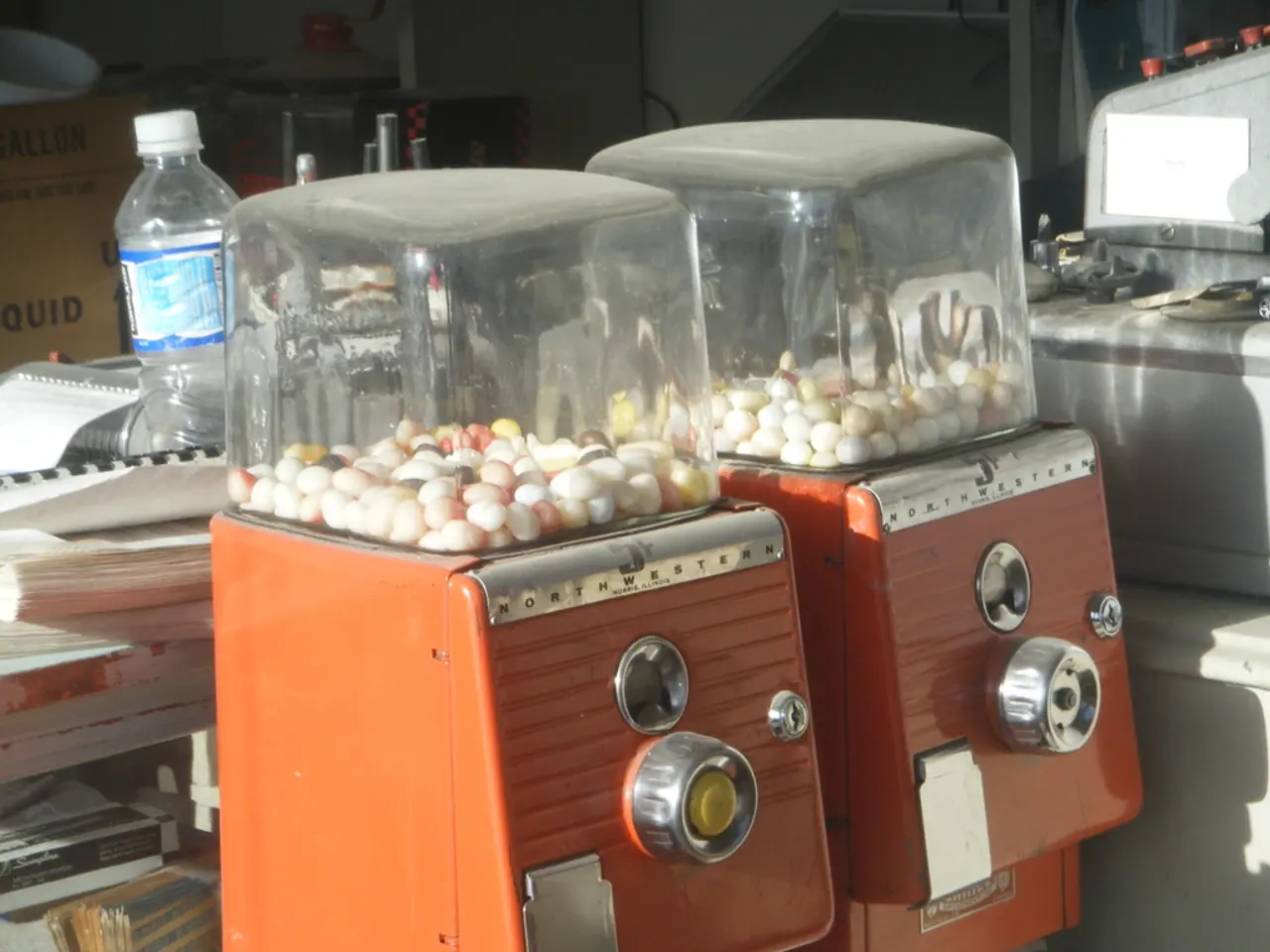Creative Science Projects for Microbiology at 4th-8th Grade Level
Unleashing the Tiny World: Microbiology Science Fair Projects for Grades 4-8
Looking for some thrilling digs into the minuscule realm of microorganisms? These science fair projects provide an engaging way for kids to explore the microscopic empire of bacteria, mold, and yeast, all while mastering the scientific method. Equipped with these hands-on projects, children will flourish in their science classes or at science fairs, as they gain essential microbiology concepts in a safe and entertaining manner.
Curious yet? Check out these fascinating microbiology experiments!
Microbiology Magic
These microbiology magic tricks teach students in grades 4-8 real science skills while delving into the microscopic world. Each project promotes observation, data collection, and critical thinking – key ingredients for winning at science fairs!
Things to Remember About Nutrient Agar vs Regular Agar
To successfully grow bacteria or yeast, you will need nutrient agar plates, not just ordinary agar.
Nutrient agar comes with delicious goodies (such as beef extract) crucial for microbes to thrive.
Regular agar is simply a jelly without the essential nutrients to support bacterial growth by itself.
1. Where in the World is the Germiest Spot?
Questions: Have you ever wondered where the germiest spot in your home or school might be?
Concepts: Bacterial contamination, hygiene
Materials:
- Sterile cotton swabs
- Nutrient agar plates (pre-poured)
- Permanent marker for labeling
- Zip-top bags or plastic wrap
- Tape
Steps:
- Swab several surfaces (e.g., doorknob, kitchen counter, toilet seat, phone screen).
- Gently rub each swab onto a separate labeled agar plate.
- Seal and securely put each plate in a warm, dark location for 3-5 days.
- After a few days, observe and document the size, color, and number of growths.
Bonus: Compare home to public places, or examine before and after cleaning.
🔍 You can peek at our full Growing Germs Science Experiment (non-agar version) for more details on this exploration.
🔬 Behind the Science: Bacteria are tiny organisms lurking in numerous places. Some are harmless, while others can cause illness. This experiment helps students learn where bacteria are typically found and highlights the importance of cleanliness.
2. Mold, Mold, Who’s Got the Most?
Questions: How fast will mold grow on different foods -- bread, cheese, or fruit?
Concepts: Mold growth, food spoilage
Materials:
- Slices of bread, cheese, fruit pieces
- Zip-top bags or clear containers
- Tape and labels
- No need for agar – mold grows directly on food
Steps:
- Place one piece of each food into a different sealed bag.
- Leave them in a warm, dark space.
- Daily observations to track the growth of mold (color, size, texture).
- Document which food molds first and the amount of mold.
Bonus: Observe mold growth in refrigerated vs. room-temperature conditions.
🔍 Peek at our Bread Mold Experiment for more insights on this investigation.
3. Which Handwashing Technique is Best for Germ Removal?
Questions: Which technique eliminates the most bacteria -- soap and water, water only, or hand sanitizer?
Concepts: Personal hygiene, bacterial reduction
Materials:
- Nutrient agar plates
- Swabs
- Soap, water, and hand sanitizer
- Timer
Steps:
- Swab unwashed hands and apply the sample onto an agar plate.
- Wash hands using soap, water only, or sanitizer (for 30 seconds each method).
- Swab again after washing and put the sample onto new plates.
- Store plates in a warm, dark location for 3-5 days for bacterial growth observations.
Bonus: Experiment with various hand soaps or washing durations.
🔬 Behind the Science: Handwashing eliminates bacteria that can spread disease. Both soap and hand sanitizer function in distinct ways – soap washes off dirt and germs, while sanitizer directly kills many bacteria. This project allows students to compare the effectiveness of both techniques for removing germs.
4. Can Natural Substances Kill Bacteria?
Questions: Which natural ingredients obstruct bacterial growth?
Concepts: Antibacterial properties, inhibition zones
Materials:
- Nutrient agar plates
- Swabs
- Garlic, honey, vinegar, lemon juice, etc.
- Sterile paper discs or small paper circles
- Tweezers
Steps:
- Spread bacteria onto a plate by swabbing an unwashed surface.
- Soak paper discs in various substances and insert them onto the agar.
- Seal and observe for clear areas around discs (no bacterial growth = inhibition).
Bonus: Compare natural vs. store-bought disinfectants.
🔬 Behind the Science: Some natural substances, such as garlic and honey, contain compounds that prevent bacteria from growing. These are called antibacterial properties. This project reveals how different substances work to battle bacteria.
Tips to Achieve the Best Results:
- Allow up to 10 days for the complete experiment.
- Use warmth and a dark environment, such as inside a cabinet or box, to speed up mold growth.
- Gently wet bread or fruit for quicker results (not excessively wet).
- Utilize clean but unwashed food to ensure natural mold spores are present.
- Avoid refrigerated samples unless testing that variable.
🔬 Behind the Science: Mold is a type of fungus that grows on organic materials in warm, damp conditions. Some foods offer different nutrients, so some may mold faster than others. This experiment teaches students how to observe which foods best support mold growth.
5. What Affects Yeast Fermentation?
Questions: Which sugar helps yeast produce the most gas?
Concepts: Fermentation, gas production, fungi
Materials:
- Active dry yeast
- Sugar types (white sugar, brown sugar, honey, etc.)
- Warm water
- Clear bottles or cups
- Balloons
- Measuring spoons
- No agar needed – yeast growth is measured through gas production.
Steps:
- Mix yeast with warm water and one type of sugar in each bottle.
- Stretch a balloon over each opening.
- Store in a warm spot.
- Track balloon inflation over 1-2 hours.
Bonus: Experiment with different temperature conditions or artificial sweeteners.
👉 Dive deeper into the Yeast Fermentation Experiment!
🔬 Behind the Science: Yeast is a type of fungus that transforms sugar into carbon dioxide gas during fermentation. This gas inflates the balloon. Students discover how the different sugars affect the speed and amount of yeast fermentation.
6. Does Fruit Washing Prevent Mold?
Questions: Does cleaning fruit help it stay fresh for a longer period?
Concepts: Mold prevention, surface contamination
Materials:
- Strawberries or grapes
- Water, vinegar, produce wash
- Clear containers or bags
- Labels and tape
- No need for agar – mold grows directly on fruit
Steps:
- Wash groups of fruit using different methods (or leave unwashed).
- Place each group in a separate labeled container.
- Store at room temperature.
- Observe mold growth daily.
Bonus: Include various fruit types or test different storage conditions.
🔬 Behind the Science: Fruit frequently carries mold spores and bacteria on its surface. Washing can get rid of some, but others work better. This experiment reveals if washing fruit delays spoilage.
7. Can UV Light Kill Bacteria?
Questions: Does UV light exposure help inhibit bacterial growth?
Concepts: UV radiation, disinfection
Materials:
- Nutrient agar plates
- Swabs
- Flashlight with UV bulb or sunlight
- Materials such as sunglasses or clear plastic
Steps:
- Swab a surface and apply bacteria to several plates.
- Expose some to UV light for various durations.
- Leave others covered (control groups).
- Observe growth after a few days.
Bonus: Experiment with various filter materials or time intervals.
🔬 Behind the Science: UV light damages the DNA of bacteria, making it difficult for them to grow and reproduce. This occurs in sunlight and UV lamps to disinfect surfaces. Students will see the effects of UV light exposure on bacterial growth.
Tips for All Science Fair Projects with Microbiology
- Always seal agar plates securely, and don’t open them after growing bacteria.
- Never open zip lock bags containing moldy food. Make observations without touching the bacteria.
- Label everything clearly and snap daily photos.
- Use bar graphs or pie charts to showcase your findings.
- Include a clear question, hypothesis, procedure, results, and conclusion in your display.
- These hands-on microbiology experiments serve as engaging education for kids in grades 4-8, introducing them to the microscopic world through various projects.
- The "Where in the World is the Germiest Spot?" project involves swabbing surfaces, documenting the growth of bacteria, and learning about bacterial contamination and hygiene.
- The "Mold, Mold, Who’s Got the Most?" experiment focuses on mold growth on different foods, teaching kids about food spoilage and the importance of cleanliness.
- The "Which Handwashing Technique is Best for Germ Removal?" project allows children to compare the effectiveness of soap, water, and hand sanitizer in removing bacteria.
- The "Can Natural Substances Kill Bacteria?" project investigates which natural ingredients can hinder bacterial growth by observing inhibition zones.
- The "What Affects Yeast Fermentation?" experiment explores the effects of different sugars on the speed and amount of yeast fermentation.
- The "Does Fruit Washing Prevent Mold?" project reveals if washing fruit helps it stay fresh for a longer period by observing mold growth on washed and unwashed fruits.
These projects are part of a broader education-and-self-development, including online education resources, that not only make science fun but also encourage kids to learn through play and experiments in the field of microbiology. With projects centered around art, space, and education, kids are sure to enjoy gaining knowledge and essential skills in a creative and interactive manner.








